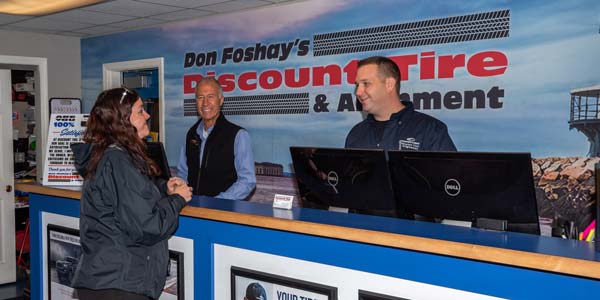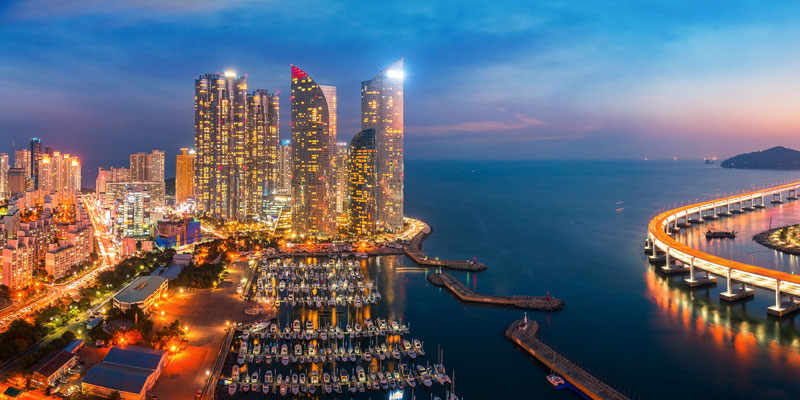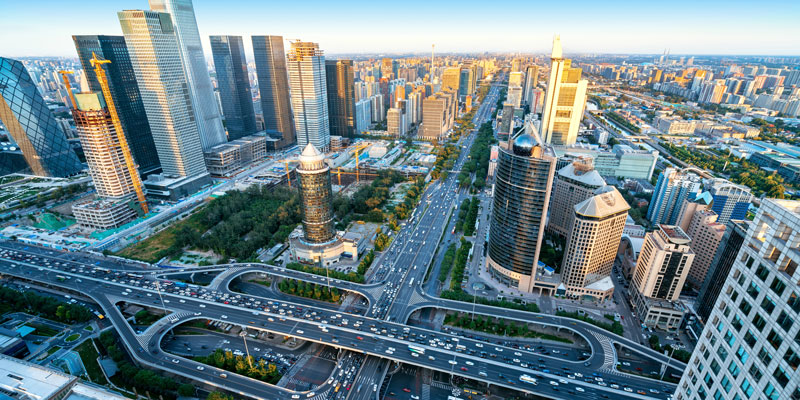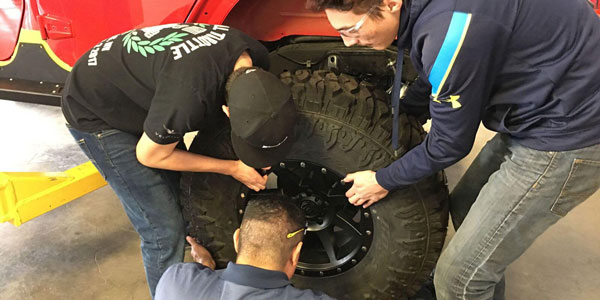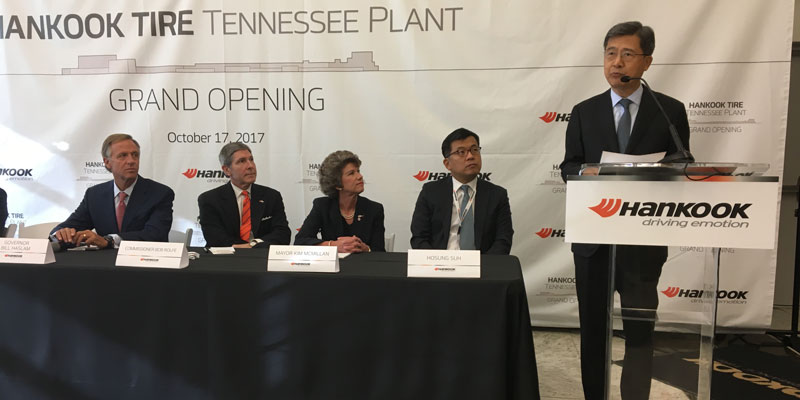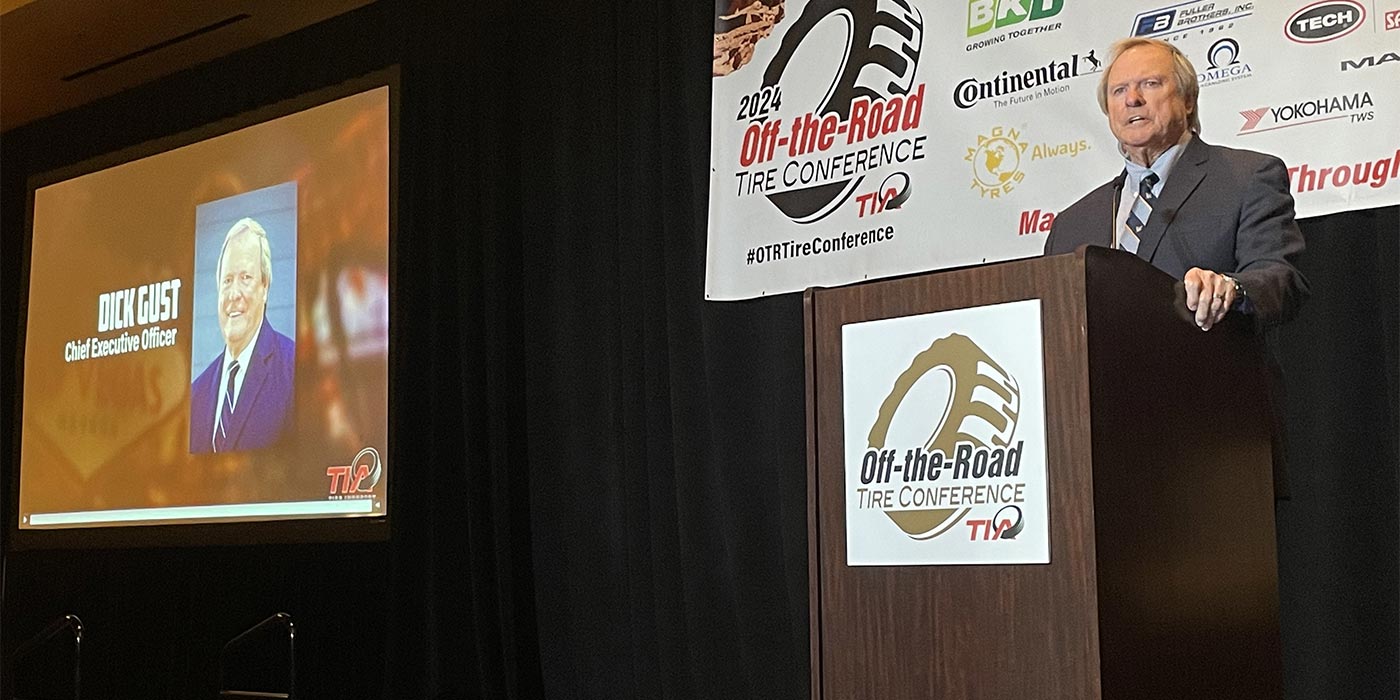Over the next five years, the global market for tires will maintain growth as macroeconomic indicators in the world economy continue to strengthen. Looking specifically at the tire manufacturing, high-performance tire and off-the-road tire segments, there is a common thread: these sectors have seen significant capital and technological investment as manufacturers attempt to meet consumer demand for increasingly sophisticated, resilient and cost effective tires.
Smithers Rapra – global leader in rubber, plastics, polymer and composites testing, consulting, and market intelligence products and events – has recently published several new market reports covering segments of the global tire industry.
Information in this piece is drawn from the following Smithers Rapra’s tire industry market reports:
• “The Future of Tire Manufacturing to 2022”
• “The Future of High-Performance Tires to 2022”
• “The Future of Off-the-Road Tires to 2022”
The reports were researched and written by one of Smithers Rapra’s expert tire consultants Arthur Mayer.
Tire Manufacturing
Smithers forecasts global tire manufacturing will grow nearly 4% per year to 2022 – driven by increased demand, tire innovations, and continuing capital spending and capacity expansion by tire suppliers. Analysis in “The Future of Tire Manufacturing to 2022” identifies how environmental and tire regulations, changes in materials, tire designs, and demands on tires are impacting the tire manufacturing market.
As tire industry output rises from 17.25 million tons in 2016 to 21.20 million tons in 2022, its capital expenditure will increase from around $13.4 billion to reach $17.0 billion at the end of this period.
These factors are adding significant pressure to innovate tire manufacturing as a whole, as well as individual process steps, such as mixing, tire building and curing. For years tire manufacturing has been a slow-changing and conservative environment; however, change is now accelerating with trends such as outsourcing, material use minimisation, plant specialization, and geographic location change the structure and footprint of production. Meanwhile, technological innovations like further automation, tire modeling, equipment innovations, RFID/smart factories and tire testing are transforming the process, too.
“The tire industry currently is in the middle of a boom cycle, both with respect to capital spending and net capacity additions,” Mayer observes. “Overall, industry capacity stands at approximately 2.4 billion units, and on a net basis global capacity is expected to grow nearly 3% per year over the forecast period, slower than capital spending and production and demand growth. Rationalization of some overcapacity in certain markets – like China – and likely increases in capacity utilization contribute to this difference.”
The changes in tire materials and designs, the need for greater efficiencies, and the development of appropriate and advanced tire process machinery are helping sustain and grow capital spending by tire companies across the globe. This is in addition to the need to optimize and update capacity to be closer to key customers and markets. Overall, the global tire industry spent approximately $13.4 billion on plant and equipment in 2016, and is expected to grow the figure through 2022 to keep pace with changes in the tire industry.
The top echelon of tire producers has been relatively stable in recent years, but mergers and acquisitions have contributed a great deal to the advancement and standardization of production systems over the past several decades. This culminated in the recent acquisitions of Pirelli by ChemChina and CGS/Mitas by Trelleborg. There is likely to be further future activity of this kind as companies seek manufacturing and distribution efficiencies, technologies and improved market access. This will further spread and accelerate the diffusion of manufacturing evolutions across end-use sectors and geographic regions.
Improvements in manufacturing processes have accelerated during the last decade, spurred by the increased focus on environmental issues and the construction of new factories to meet growing demand and to be able to handle new equipment more easily. Advances in automation have also helped significantly. There are still very significant savings to be realized, as well as increasing environmental regulations and consumer labeling requirements to comply with. Together these mean that improvements in manufacturing efficiencies will continue to be a focus for tire companies.
High-Performance Tires
The high-performance tire or premium sector – units with a diameter of 17 inches or above and holding a V-rating or better – has been among the fastest-growing parts of the tire market over the past decade. This positive outlook for manufacturers will continue, with the HP segment growth outpacing the overall market over the next five years to 2022.
Exclusive data in the “The Future of High-Performance Tires to 2022” forecasts the high-performance (HP) tire market will grow at 6.3% year-over-year to 2022 – reaching a market value of $74.7 billion, up from $54.9 billion in 2017.
About 56% of the total global high-performance market value is accounted for by light vehicles, and that is also where the growth is, and has been. In unit terms, light vehicles account for nearly four-fifths of the volume and most of the historical and forecast growth. As the industry evolves, manufacturers have to address new end-user priorities, produce different tire formats, and embrace new technical solutions.
Mayer notes: “The high-performance tires market has traditionally been focused on speed ratings, but there now seems to be little room for further increase in these and the focus will shift to other properties. Some of these will still relate to high performance – grip, handling, ride comfort, etc. – but other properties now impacting the general tire market will also become important, and have to be taken into consideration. These are mainly environment-related; and include fuel efficiency, sustainability of raw materials, longevity and recycling.”
Original equipment manufacturers (OEMs) are continuing to drive the HP tire trend. As new car original equipment (OE) fitments continue trending toward higher wheel diameters and lower aspect ratios, the number of HP tire sales as original equipment sizes will continue to grow. Part of what drives the tire trend at the OE level is the demand for greater precision vehicle performance. This is resulting in the greater demand for V- and Z-class tires – rated to 149 mph and higher – as greater precision is required to enhance a performance vehicle’s ability to accelerate, stop and maneuver.
The new HP driver is becoming the norm, on account of what the OEM puts on their cars. This means, among other things, that the expectation of precise handling and stability of the past is now competing with an expectation of ride comfort, quietness and all-season capability.
Despite much progress over the past decade, and a sense that many of the large possible gains have already been made, there is still an impetus in the industry to continue with technological improvements, even if incrementally.
The major trends are proliferating sizes, shifts into higher speed ratings, improved wet/dry grip, longer wear and improved tread life, greater comfort, and less noise – and realizing these at price points acceptable to OEM and replacement consumers. Advances in tire design, construction and materials – such as better compounding, wider use of 3-D siping, and asymmetrical designs – will support this.
Off-the-Road Tires
The global market for off-the-road (OTR) tires is estimated to be more than 3.7 million tons in 2017, corresponding to a value of $24.8 billion, according to “The Future of Off-the-Road Tires to 2022.” Smithers analysis shows it will have an overall five-year compound annual growth rate (CAGR) of 4% to 2022 in volume terms, and 5.2% per year in value terms – reflecting likely price increases and greater added value.
By far the largest part of the market is for the medium/small sizes: 29-inch and below, but consisting mainly of 24- to 25-inch bead diameters. In terms of growth, the medium/small segment leads in both value and volume terms in both the historical and forecast periods. While large OTR tires (29- to 51-inch diameters), and especially giant OTR tires (51- to 63-inch diameters) will rebound from their losses for 2012-2017, though they will still trail the overall market.
Mayer is bullish on the small diameter end of the market, saying, “Despite their relatively small sizes and prices, the growing opportunities are in medium and small OTR tires, particularly for the small rim sizes: 25-inch and under. Much of the growth in this segment will come from tires for vehicles associated with infrastructure improvement, such as skid steers, telehandlers, backhoes and small loaders.”
Demand for OTR tires is driven by activity in three main areas:
• Mining/construction
• Agriculture
• Industrial
The largest use for OTR tires is in mining and construction, which also includes some larger industrial applications such as ports and handling where the largest forklift trucks are used.
Mining and construction growth over the last several years has been restrained by the effects of soft energy and metal prices that have limited mining activity. However, the aggregate mining segment (aggregate used in construction) has helped the overall market to grow. Meanwhile, construction, agriculture and industrial have continued their steady performances, generally in line with overall economic growth. Only the growth in value of the smallest end use, the industrial market (6.2% CAGR from 2017–2022) will significantly vary from the market as a whole, which is growing at 5.2% by comparison.
The technological and market changes in the OTR tire industry presently and over the next five years are presenting several challenges to manufacturers and suppliers alike. From an end user’s perspective, the imperative is to continue to drive efficiency and productivity, even as equipment gets larger and places additional stress and performance demands on its tires. New tires will continue to focus on extended tread life, durability and heat resistance to drive down total cost of ownership. In fact, the cost of ownership is beginning to become more important than the upfront purchase price.
Pneumatics remains the dominant technology in OTR tire manufacturing due to the tire’s low contact pressure, low vertical stiffness, low rolling resistance over rough surfaces, and minimal or low mass for the load carried. Mayer comments that “Newer OTR tires need more air than older ones and this can be important in the pursuit of optimizing tire performance and service life. For example, Michelin’s XDR250 tire for 250-ton-class haulers, introduced in 2015, contains at least 9% more air than its predecessor, which allows it to carry heavier loads.”
With heavy exposure to the volatile, commodity price-sensitive sectors of energy and metals mining, as well as agriculture, the global market for OTR tires has been under pressure, but has been recovering in recent years compared to at the outset of the decade, when overall volume and value growth was below that of the global economy. Despite the current uncertainty, key OTR players such as Michelin are anticipating long-term growth for the OTR industry, as evinced by the company’s doubling its earthmover tire manufacturing capacity over the last decade. Barring further significant shocks and building on what is a steady growth forecast, as well as moderate rebounds in commodity prices from recent lows, OTR tires should actually begin to outperform the overall economy, with projected compound annual value growth rate of 5.2% for 2017–2022.
The share of OTR tire product volume will be continuing its ongoing shift away from the mature economies of North America and Europe and toward emerging and developing economies, particularly those in the Asia Pacific region, which is rapidly approaching 50% of the global market over the forecast period. Many of the key OTR markets, like metals mining, find themselves in these higher-growth, export-intensive regions, and the large and growing populations of some of these countries contribute heavily to increased demand for agricultural OTR tires.
More Information
The trends explored in here are qualified and quantified in depth in the following Smithers Rapra market reports: “The Future of Tire Manufacturing to 2022,” “The Future of High-Performance Tires to 2022,” and “The Future of Off-the-Road Tires to 2022.” These reports and others relating to the rubber and plastics industries can be found at Smithers Rapra’s website: www.smithersrapra.com/market-reports.





